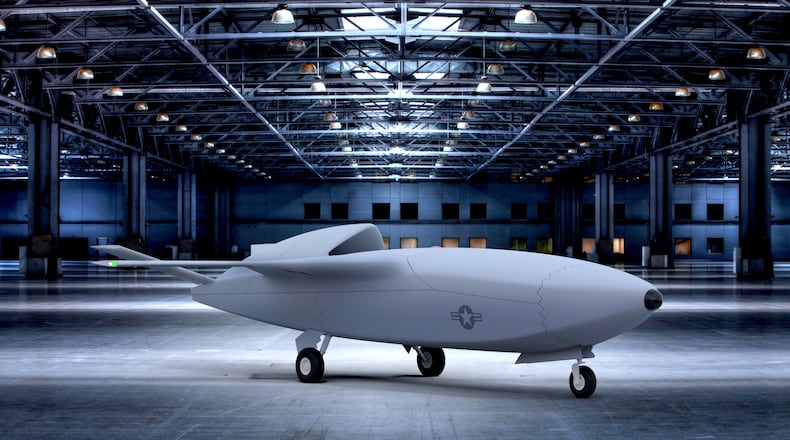Last week, the Air Force announced a quartet of winners for the Skyborg demonstration program — Boeing, General Atomics, Kratos and Northrop-Grumman.
The program is overseen by the Air Force Life Cycle Management Center and the Air Force Research Laboratory (AFRL), both based at Wright-Patterson Air Force Base. AFRL supports two services, the Air Force and the new Space Force.
Air Force Brig. Gen. Dale White and Air Force Brig. Gen. Heather Pringle conducted a media availability on Zoom Tuesday to discuss the program. A “kickoff meeting” between the four vendors is planned, with a vendor or vendors to be selected to produce a prototype, an award to be made in 60 to 90 days.
The idea holds the potential to “change the way we fight,” White declared.
“We truly believe this is game-changing,” said White, who is program executive officer for fighters and advanced aircraft at the Air Force Life Cycle Management Center (AFLCMC).
The vehicles can be seen as an “open book” or platform to which technologies can be added and adapted, to perform as needed in combat, Pringle said.
“When the warfighter is clamoring for it is when we know we’re ready,” said Pringle, who is AFRL commander.
The goal is to get a prototype in the field next year, “getting something that the warfighter needs in his hands sooner,” she also said.
“With these four vendors, we’re very comfortable and very confident,” White said.
Aspects of the technology to be explored include sensors, enemy suppression and much more. As the Air Force goes through the delivery order process, leaders will determine how many vehicles to buy, White said.
“The more we have out there, the more we can experiment with,” he said.
The objective is to create a “best of breed” system that adapts, orients and makes decisions at “machine speed.”
Right now, there are no plans for testing at Wright-Patterson, White said. But the program is overseen there, and he said there are plenty of people at both AFRL and the AFLCMC involved in the effort, some of them on a part-time basis.
White could not estimate how many people at Wright-Patterson are working on the project. But he offered that “at least” 50 full-time people are involved, backed up by “an army” of support.
“It’s all-in across the departments,” Pringle said.
“The teaming is like nothing I’ve ever seen,” White said, calling it later in the meeting “the team of teams.”
And Pringle hinted that there is potential for further work in Ohio and at Wright-Patterson.
“If there are opportunities on the autonomy side, or developing the sensors ... or anything else that will help us achieve the operational goals that we have with our partners, who are the warfighters, we’re open to anybody and anywhere that would make that happen,” the AFRL commander said.
About the Author

